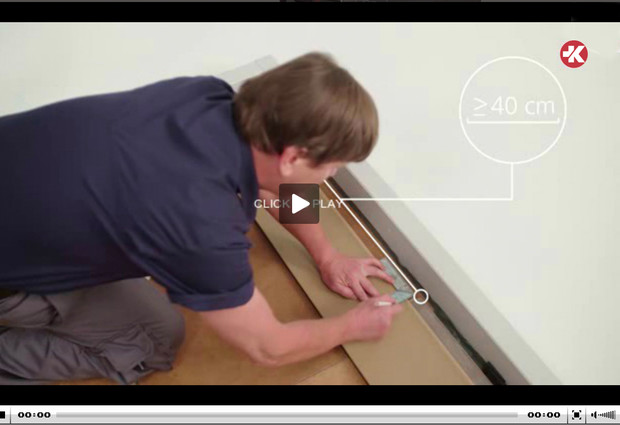Should you install laminate flooring in the basement?
Unfortunately, there’s no universal answer to this question. Whether or not it’s a good idea depends mainly on how moist your basement is. Generally speaking, laminate can be laid anywhere that isn’t excessively damp. So it won’t always be suitable.
Moisture plays a key role
Laminate consists to about 90% of wood, a material that readily expands and shrinks in response to changes in the ambient temperature and the amount of moisture in the air. If it’s too damp, laminate is therefore likely to swell and buckle and suffer damage in the process. So the most important question is whether your basement has the right amount of moisture.
If you’re concerned that your cellar may be too damp, measure the relative humidity at regular intervals over a period of several days. If the value stays fairly constant between 50% and 60%, you can install laminate flooring with a good conscience.
If the moisture level is too high, find out why. In many cases, a washing machine or dryer or poor ventilation is to blame. But there may also be other reasons. So don’t hesitate to consult an expert! Once you’ve identified the source of the problem, you can proceed to eliminate it and create suitable conditions for laminate flooring in your basement.
Excessively dry cellars are much rarer than damp ones. You can tell them from frequent discharges of static electricity: walking and then touching a doorknob might give you a shock. This can be fixed by, for example, by hanging up wet laundry or operating a humidifier, or adding pot plants if there is enough light.
How you use the cellar makes a big difference
A major role is also played by how you want to use your basement. Are you thinking of creating a hobby or party room where you will spend a lot of time? Or will you primarily use the space to store tools, furniture, clothing, photo albums or other precious items? It’s also important to store your personal valuables in dry conditions.
If you wash and dry laundry in your basement, laminate flooring isn’t the right choice. The same statement applies to cellars in which dripping-wet bicycles, snow-covered sledges or watering cans are stowed. Objects that may leave puddles of water on the floor aren’t compatible with laminate.
Special things to take account of when installing laminate flooring in basements
If your basement meets the basic prerequisites for laminate, the same rules apply to installing it as in any other room: compensate for unevenness in the substrate and leave gaps at walls, pipes etc. This KRONOTEX Laminate Flooring Guide includes all of the important information, detailed step-by-step instructions and various useful tips and tricks. One difference is that the normal underlay should be supplemented by a damp-proof membrane beneath the laminate. As long as you meet all the requirements, you can proceed to install your laminate floor.

Watch our short video tutorial to learn some useful tips and tricks.
The most important requirements for installing laminate flooring in basements:
- Ambient temperature of 20° to 22°C
- Relative humidity of 50% to 60%
- If it’s too damp, find and eliminate the cause.
- If it’s too dry, hang up laundry, install a humidifier or add pot plants.
- Lay a water-proof membrane under the laminate.
- The planned uses for the basement should be compatible with laminate.
